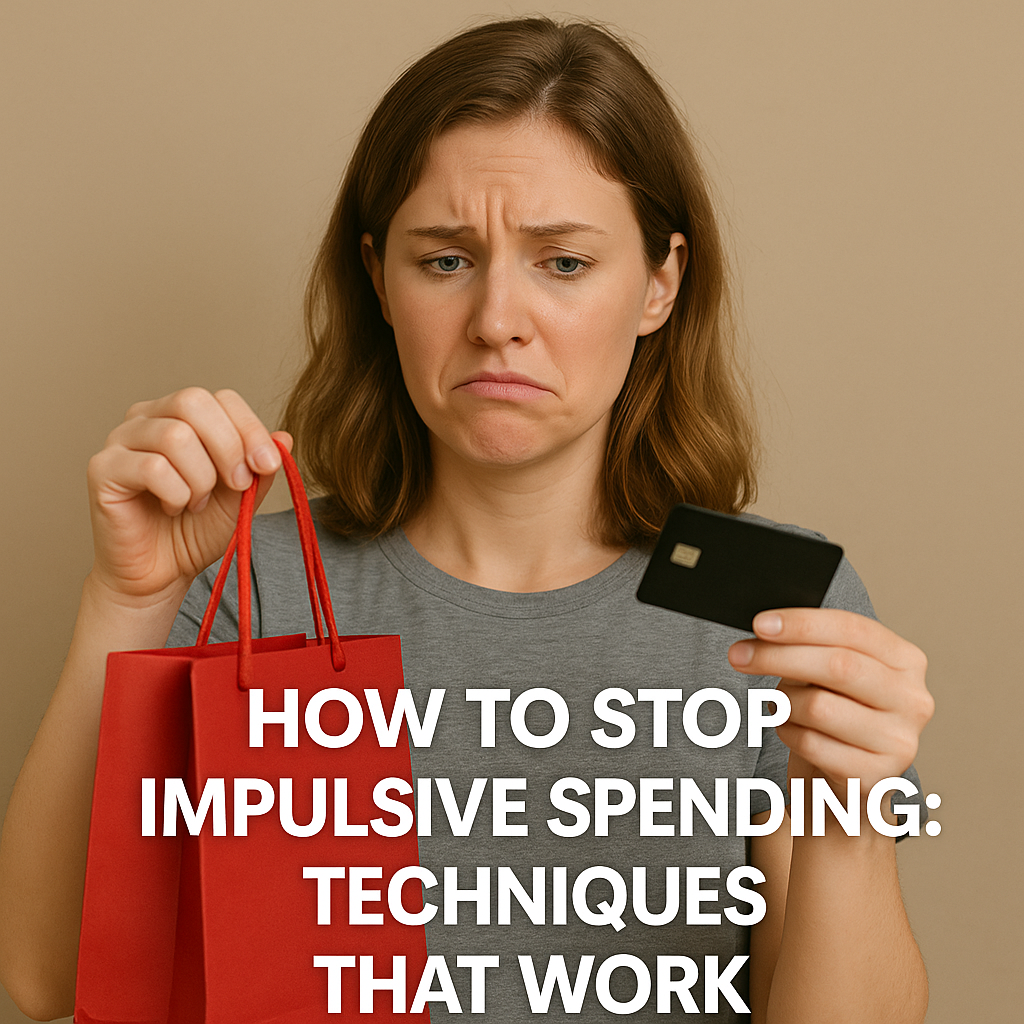Impulsive spending can quietly drain your finances, disrupt your budget, and prevent you from reaching your financial goals. Whether it’s a flash sale, a targeted ad, or a moment of emotional vulnerability, buying on impulse is incredibly common—but entirely manageable with the right techniques.
In this article, you’ll learn actionable strategies to identify and control your impulse spending habits and take back control of your money.
What Is Impulsive Spending?
Impulsive spending refers to unplanned purchases made on the spot, driven by emotion rather than need. These purchases often provide a temporary sense of satisfaction but can lead to financial stress or regret shortly afterward.
Common triggers for impulsive buying include:
- Emotional states (e.g., stress, sadness, excitement)
- Peer influence or social media pressure
- Discounted prices and promotions
- Boredom or the desire for instant gratification
Why Impulsive Spending Hurts Your Finances
Impulse purchases add up over time. That $10 lunch, $30 gadget, or $70 outfit might seem insignificant, but repeated regularly, they can total hundreds—or even thousands—of dollars per year. This not only affects your savings, but it also diverts money away from important financial goals like paying off debt, building an emergency fund, or investing.
1. Set a Realistic Monthly Budget
Creating and sticking to a budget gives you a clear overview of your income and spending habits. Start by tracking your expenses for one month, then assign spending limits for different categories such as food, transportation, entertainment, and personal items.
Pro tip: Allocate a small “fun money” allowance so you can enjoy spending without derailing your financial goals.
2. Use the 24-Hour Rule
The 24-hour rule is a powerful delay tactic. Before making any non-essential purchase, wait 24 hours. This buffer allows time for reflection, often revealing that the item wasn’t truly necessary or desirable.
If you’re shopping online, leave the item in your cart and close the browser. Revisit it the next day—chances are, you’ll decide to skip it.
3. Avoid Shopping When Emotional
Emotional spending is a real phenomenon. Many people buy things when they’re sad, stressed, or even bored as a way to cope. Be mindful of your emotional state before making purchases. Instead of shopping, try alternative coping mechanisms like:
- Going for a walk
- Calling a friend
- Journaling
- Listening to music or meditating
4. Unsubscribe and Unfollow
Marketing emails and influencer content can tempt you into unnecessary spending. Unsubscribe from promotional emails and newsletters from brands you don’t truly need. Unfollow social media accounts that push consumerism or make you feel like you need to buy to “keep up.”
Instead, fill your feed with educational, motivational, or financial wellness content.
5. Pay with Cash (When Possible)
Using cash instead of a card can physically limit how much you spend. There’s a psychological connection to handing over real money versus swiping a card. Try using the cash envelope system, where you put a set amount of cash into envelopes for specific expenses.
When the cash runs out, you don’t spend more.
6. Make a Shopping List (and Stick to It)
Whether you’re going grocery shopping or to the mall, make a list before you leave and commit to buying only what’s on it. This reduces the risk of wandering into impulse territory.
Bonus tip: Avoid shopping while hungry—especially for groceries!
7. Reflect on Long-Term Goals
Keep your bigger financial goals top of mind. Want to travel? Buy a house? Start a business? When tempted to buy something impulsively, remind yourself how that money could help you reach a larger, more meaningful goal.
You can even keep a photo or vision board on your phone for a quick reality check before spending.
Final Thought: Progress Over Perfection
Eliminating impulsive spending is a process. The goal isn’t perfection, but awareness and improvement. Every step you take toward more mindful spending brings you closer to financial control and freedom.
Remember, it’s not just about saving money—it’s about spending with purpose.
